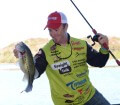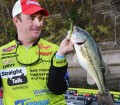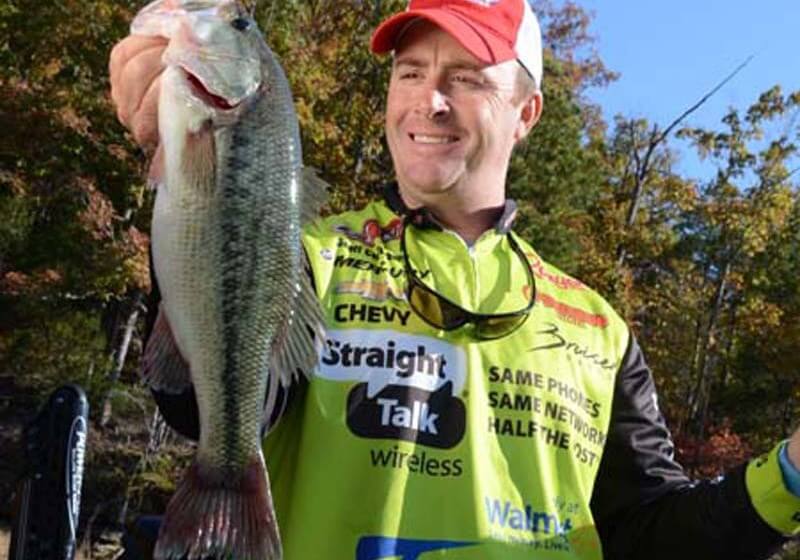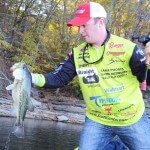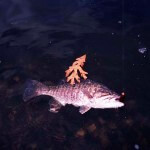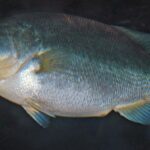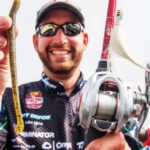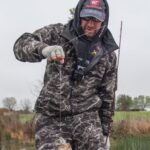John’s Note: Scott Canterbury of Springville, Alabama, won the title of Rookie of the Year in 2008 on the FLW tournament circuit. He also won an EverStart event and a Rayovac tournament on Lake Eufaula in Alabama. He’s finished second in the Forrest L. Wood Cup twice, winning $100,000, and he has many more second-place finishes in tournament bass fishing. When he was fishing tournaments in his home state of Alabama, he won three fully-rigged bass boats at different tournaments and cashed quite a few checks in local tournaments. “But on the tour level of tournament bass fishing, I haven’t had a win yet, although I’m getting close,” Canterbury reports. Although Canterbury’s a fulltime bass pro, he also works construction and is a plumber part-time.
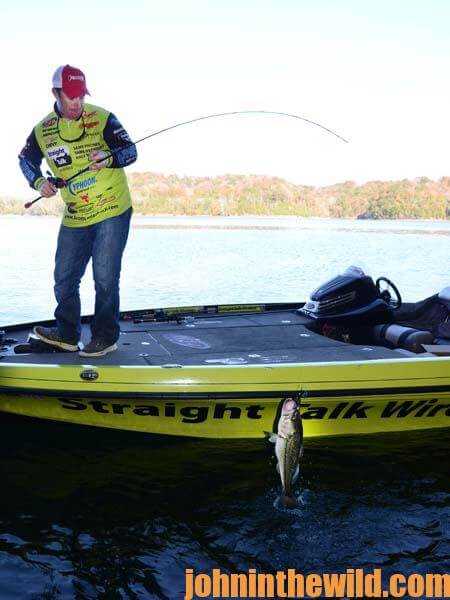 In 2015, I probably learned more about bass fishing than I ever have in my life. Up until 2014, I had built my bass fishing career primarily on flipping visible cover. When I first started fishing, I was a jig fisherman. Alabama, where I live, homes many shallow-water lakes where you can flip a jig and catch bass at almost any time of the year. I learned that I could fish visible cover, flip it with a jig and catch bass on almost any lake. But when you start traveling to other states and are fishing against 150 of the world’s best bass fishermen, I discovered that I had to learn how to use my electronics and fish offshore.
In 2015, I probably learned more about bass fishing than I ever have in my life. Up until 2014, I had built my bass fishing career primarily on flipping visible cover. When I first started fishing, I was a jig fisherman. Alabama, where I live, homes many shallow-water lakes where you can flip a jig and catch bass at almost any time of the year. I learned that I could fish visible cover, flip it with a jig and catch bass on almost any lake. But when you start traveling to other states and are fishing against 150 of the world’s best bass fishermen, I discovered that I had to learn how to use my electronics and fish offshore.
In the Rayovac Kentucky Lake tournament, I had a spot picked out 20 miles down the lake where I thought I could catch a big bag of bass. I had graphed this place during practice, and I knew a large school of bass was holding on that spot. However, when I went to that area on the first day of the tournament, I didn’t get a bite. I went to several other places where I felt certain I’d catch a bass, and I caught about 16 pounds of bass. But before the tournament was over, I ran back to my number-one spot and still couldn’t get a bite. So, I settled myself down and decided to start thinking about what I had done, and what I needed to do. I knew I had found those bass on my number-one spot using my electronics. Every day of practice I’d locate two or three schools of bass, cast a lure out and catch the bass. I told my partner, “I’m just going to start graphing the bottom and looking for bass. Although I’ve got 16 pounds in the boat, I know I need more weight than that to do well in this tournament.”
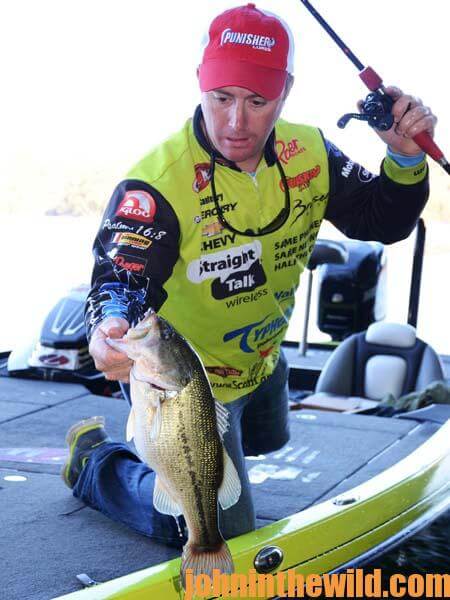 I quit fishing and starting running the ledge where I had found the bass before. After I had traveled down the ledge for about 200 yards, by watching my depth finder, I located that same school of bass. I know it was the same school of bass that I originally had found, because this was a big school of bass. I told my co-angler, “We’re going to start catching bass, because I’ve found a big school. I’m not sure how big the bass are in this school, but there are a lot of them.” On just about every cast, I caught a bass, and I caught them on a wide variety of lures. I started out with the swimbait, and then I changed to a Punisher Lures’ Hail Mary. I caught some on a Strike King 10XD crankbait, and I caught a few on a football jig. From this tournament, I learned that instead of pulling up on a spot and starting to fish where I had found bass 3 days before in practice, I needed to graph every spot I planned to fish and see if the bass were still there.
I quit fishing and starting running the ledge where I had found the bass before. After I had traveled down the ledge for about 200 yards, by watching my depth finder, I located that same school of bass. I know it was the same school of bass that I originally had found, because this was a big school of bass. I told my co-angler, “We’re going to start catching bass, because I’ve found a big school. I’m not sure how big the bass are in this school, but there are a lot of them.” On just about every cast, I caught a bass, and I caught them on a wide variety of lures. I started out with the swimbait, and then I changed to a Punisher Lures’ Hail Mary. I caught some on a Strike King 10XD crankbait, and I caught a few on a football jig. From this tournament, I learned that instead of pulling up on a spot and starting to fish where I had found bass 3 days before in practice, I needed to graph every spot I planned to fish and see if the bass were still there.
In the next tournament, I took what I learned from this tournament. After the practice days ended, and once the tournament started, I’d go back to each place I planned to fish and look for the schools of fish on my depth finder. If we find a school of bass, most of us believe that we can fish that same school of bass in the same place where we’ve found them before. However, bass have fins, and they do swim. Just because a school is at one place doesn’t mean they’ll be holding on that same exact location later. Usually, a school won’t totally abandon the area where you’ve seen them, but they may move several-hundred yards and set-up in another location. Therefore, for this reason, once you become confident in finding fish with your electronics, if you can’t catch any bass on the day you’re fishing, go back to your electronics, and start looking for either a new school of bass to fish; or try to relocate the school of bass you’ve pinpointed earlier. When I can’t locate and catch the bass I’ve expected to, I’ve learned the best thing for me to do is to use the same technique that I’ve used to find that school of bass and search for them in different places or look for new schools of bass to fish.
 Often, we’ll start fishing without using our electronics to see if that same school is on the same place or not. But at this tournament, I learned to graph the bottom and find the fish every day and every time before I started fishing. So, when you’re not catching bass, instead of fishing where the bass have been, use your electronics to learn where they are, and what type structure they’re holding on the very day you’re trying to catch them.
Often, we’ll start fishing without using our electronics to see if that same school is on the same place or not. But at this tournament, I learned to graph the bottom and find the fish every day and every time before I started fishing. So, when you’re not catching bass, instead of fishing where the bass have been, use your electronics to learn where they are, and what type structure they’re holding on the very day you’re trying to catch them.
To learn more about bass fishing, get John E. Phillips’ Kindle eBooks and some print books, “How to Bass Fish Like a Pro,” “How to Win a Bass Tournament,” “Catch the Most and Biggest Bass in Any Lake: 18 Pro Fishermen’s Best Tactics, “Hot Weather Bass Tactics” and “How to Become A Tournament Bass Fisherman.” Click here to get these books.

